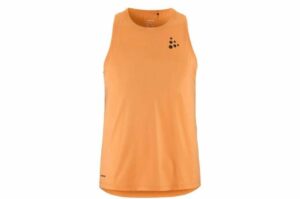Pump your arms to speed up your legs, thanks to “neural coupling”
Humans have neural connections between their upper limbs and lower limbs -- and that may help you stay strong late in the race.
“Keep pumping your arms!” That’s one of those canonical pieces of advice that it seems every coach gives to his or her runners. The idea is that, late in a run or race when your legs are burning and you’re starting to slow down, if you keep moving arms briskly, your legs will follow. It’s a nice idea — it’s always good to have some concrete piece of advice that you can hang onto when it seems like the world is about to explode. But does it work?
Unfortunately, I don’t know. But in the course of researching a completely different topic today, I stumbled on an interesting piece of research by Daniel Ferris, a University of Michigan researcher who’s best known for his research into assisted movement using robotic exoskeletons. The paper, which appeared in the journal Exercise and Sport Science Reviews back in 2006, is called “Moving the arms to activate the legs.” The full text is available here.
Ferris’s main focus in the paper is on rehabilitation for patients with spinal cord injuries, helping them learn to walk again. The gist is as follows:
Humans have neural connections between their upper limbs and lower limbs that coordinate muscle activation patterns during locomotor tasks… Recent studies indicate that arm swing may also facilitate lower limb muscle activation via neural coupling. Clinical observations of individuals with spinal cord injury first suggested that rhythmic upper limb movement improved lower limb muscle recruitment during stepping. More recently, studies on neurologically intact subjects have demonstrated an increase in lower limb muscle activation that is proportional to upper limb muscle recruitment during seated recumbent stepping.
The “seated recumbent stepping” he mentions above is a neat set-up. Basically, you sit back in a contraption that you can power with either your arms, your legs, or both. With some careful experiments, Ferris and his colleagues were able to show that when the subjects moved their arms back and forth (opposite to leg motion, as in walking and running), they were able to achieve greater muscle recruitment in their legs. Now, you might assume this is just because it’s easier to get good leverage with your leg if your opposite arm is also moving, but they tried various set-ups with the torso partly or fully strapped to the seat (so you couldn’t twist the torso to get a better angle), and the same results were observed.
The link from this to “Pump your arms when you approach the finish, and your legs will move faster” is still pretty weak. But this idea of “neural coupling” is interesting — so I guess I’ll pump my arms with renewed vigour next time I’m starting to tie up.

